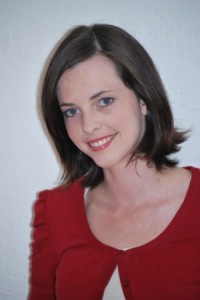 A room full of infrared images.
A room full of infrared images.
In one, a man leans against a tree. Another man licks his ear and cradles the behind of a third man. A fourth man kneels before them.
A wall plastered with surveillance images, each suspect assigned a number.
What kind of invasive world is this?
A world where there is no relationship between subject and photographer. There is no contract or mutual understanding. All because the photographer is invisible.
Can our society gain something from these private moments captured in public places?
This exhibition of images and videos taken by artists from around the world is titled ‘In camera and in public’. Naomi Cass, curator, explores the balance between morality, anxiety and artistic right.
You may think you have the right to demand someone on the street, in a park or at the beach to stop taking photos of you, but think again.
According to Mark Davison, professor of law at Monash University, individuals aren’t protected from photographers.
‘We do not have a general right to privacy in this country,’ he says.
Davison spoke at the ‘Photography as crime’ symposium held in conjunction with ‘In camera and in public’ as part of the Melbourne Festival. Along with four other academics, he explored the changing nature of photography and the law in public places.
Davison made it clear that the borders between what is public and what is private can be very unclear.
Many photographers make a living by photographing strangers in public spaces. Melissa Miles, photography historian and theorist at Monash University, wonders if it is necessary to define when photography is acceptable for artistic purposes and when it crosses moral lines.
‘Should we legislate the context of photography?’ asks Miles.
In Australia, contextual lines are usually drawn in relation to privacy, especially concerning children. However, in countries such as England, these lines are more closely tied to the threat of terrorism.
In her research, Miles conducted a survey that included 261 photographers of varying levels and ages.
‘When taking photographs in public places 75% of respondents had been asked to stop taking photos. 75% also said it had changed the way they took photographs and the places they went to photograph,’ she says.
Miles believes that these results raise concerns about the impact that conservative attitudes could have on the historical record.
‘Heavy restrictions could result in a limited photographic legacy,’ she says.
Symposium attendee and amateur photographer Stephen Alomes voiced similar concerns.
‘Children are being left out of history,’ he says.
Just this week, the ABC used an image from 1954 of children waving flags as the Queen arrived in Canberra, with the aim of locating the people in the photo. Without this, and thousands of other images people, places and experiences would be cropped out of history.
Next time you step onto the street and notice a camera snapping away, remember you could be forming an important part of our historical record.
Jyade Old is studying the Graduate Diploma of Journalism at La Trobe University and is part of upstart‘s editorial team. Follow her on Twitter: @jyadvantage.






